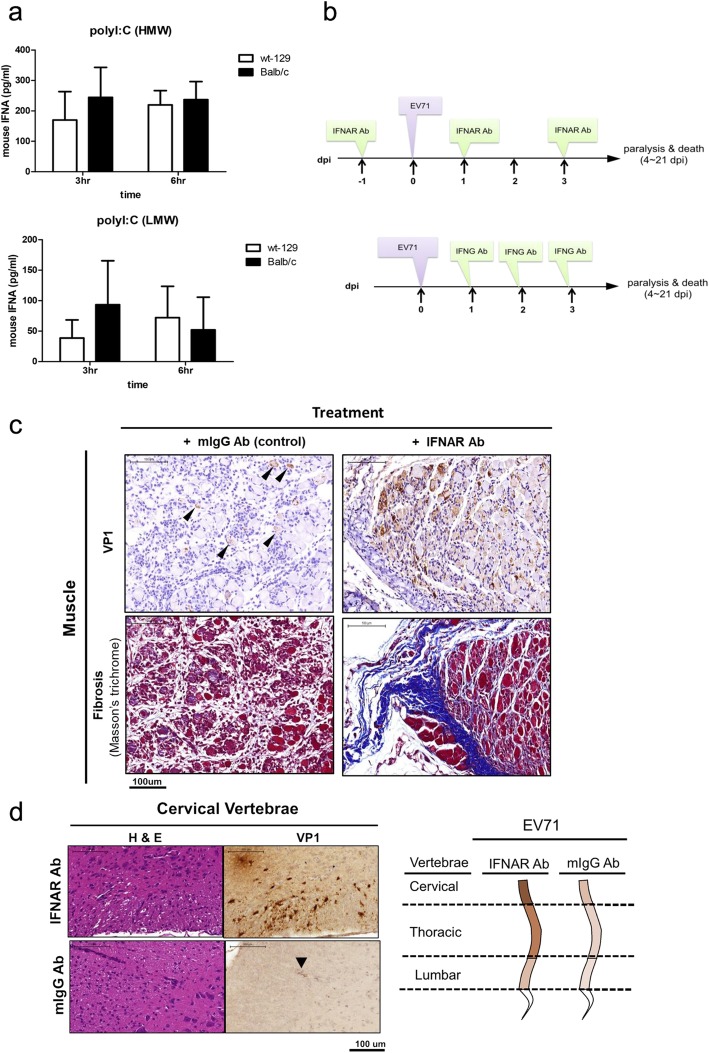Fig. 4.
Inhibition of IFN signaling enhanced EV-A71 infection and pathogenesis. a Both wild type 129 and BALB/c mice were i.p. injected with high molecular weight (HMW) and low molecular weight (LMW) poly (I:C) at the dose of 10 μg/g body weight, respectively. Sera were collected at 3 h and 6 h post-injection. Mouse IFNA was measured by the ELISA assay (Materials and Methods). b A scheme of treatment with neutralization antibody in a wt-129 mouse model. Upper panel: Neutralizing antibody specific for mouse IFNAR (interferon-alpha receptor) was injected (150 μg/ mouse) into one-week-old mice via the i.p. route 1 day before infection. EV-A71 was inoculated at 108 pfu/mouse, followed by two shots of IFNAR neutralizing antibody on 1 and 3 dpi. Lower panel: IFNG (interferon-gamma) antibody was administered on 1, 2, and 3 dpi. c Upon treatment with anti-IFNAR antibody, muscle fibrosis was easily detected at some white-jade patches. Sectioned white-jades from the hindlimb muscle was stained with IHC for VP1 (upper), and Masson’s trichrome staining (lower), respectively. The deep blue color reflects collagen fiber deposition and severe fibrosis in muscle. d Left panel: In mice treated with a control antibody mIgG, expression of VP1 protein in the spinal cord was only weakly detected by IHC. In mice treated with anti-IFNAR antibody, VP1 protein signal was stronger and more wide-spread in the cervical spinal cord. Right panel: A cartoon summary of VP1 expression in the spinal cord, including cervical, thoracic, and lumbar vertebrae

